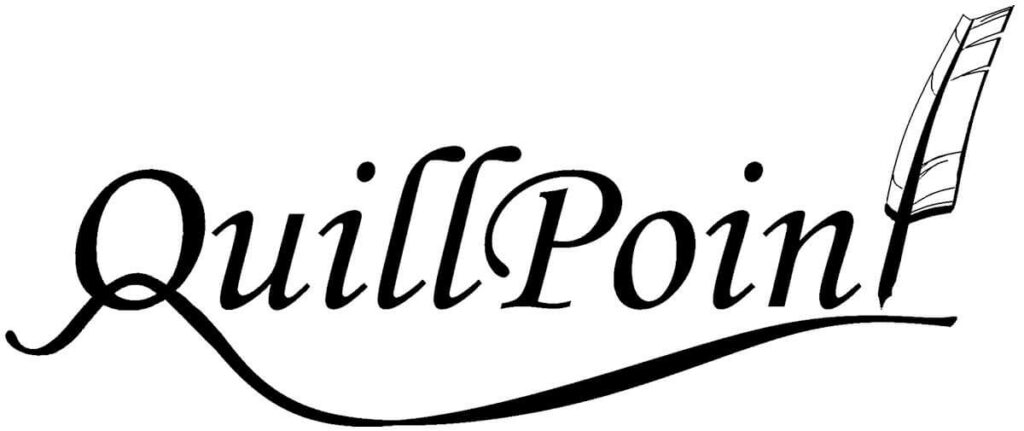Admit it. As a new business owner, you think a lot about your business’s logo. Every business needs one, even if it’s just plain words with no artwork. Having a logo makes your business look just a little bit more official. So, you probably want to know where you can get a logo designed and how much it might cost. Or maybe even how to make a free logo yourself.
Well, we have good news, and we have good news. If you want to hire someone to design a logo, you can do it for as little as $5 on Fiverr. It is, after all, known for freelancers who can make low-cost logos. The other good news is that you can create a logo for free if you’re willing to do it yourself. If you use a free logo maker software, you won’t even have to be artistically inclined to make a fairly decent one.
So, how do you make a free logo for your business?
- To Make a Good Logo, You Must First Understand Your Brand
- You’ll Need at Least Two Versions of the Logo
- What Tools to Use to Make a Free Logo
- Optimize Your Logo’s Size Before Uploading to the Web
- Your First Logo Won’t be Your Last, so Do the Best You Can and Keep Moving Forward
- Sometimes, You've Gotta Keep Your Eyes Open…
To Make a Good Logo, You Must First Understand Your Brand
Before going into the details of how to make a free logo for your business, you’ll need to understand your brand. You’ll need to think about this even if you plan to hire a freelancer to do the work.
If you followed some of our exercises on evaluating a business idea, then you should be able to describe what’s unique about your business in one sentence. That’s where your brand begins.
Your logo should visually convey a little bit about what you do and how you want your customers to feel about your business. For instance, if you’re a law firm, you’ll want potential clients to think of you as responsible and serious. So, go with darker colors and a traditional font. However, if you’re a party supply store, your logo should have bright, fun colors and a friendly font.
Don’t worry about picking the colors and font right now. Some of the software we’ll talk about will automatically suggest them. For now, you just need to decide how you want to be perceived.
You’ll Need at Least Two Versions of the Logo
For most businesses, you’ll need at least two versions of your logo. You’ll need a headline banner version and a round or square version.
The Banner Logo
The banner version of the logo is pretty self-explanatory. It’s used pretty much everywhere. It’s considered the “full” version of your logo.
If you look at the top left corner of this website, you’ll see the banner version of our The Missed Details logo. As another example, here’s the banner logo for our LLC that actually owns this website:

The Round Logo
These days, having a social media presence is important. Often, social media profiles use a circular frame for your logo. Also, for your website, there’s usually a space for a site icon, which is used on the tab of the web browser opened to your site. The site icon needs a round version of your logo too.
The round logo usually focuses on a distinct element of the full logo. For QuillPoint, we took the quill pen that makes up the “t” and expanded on it. Here’s the round logo for QuillPoint:

If your logo is made of words and you don’t want to come up with a special round design, you still have options. You can simply use the first letter of each word and put them in a circle. Alternatively, you can readjust the location of some of the words so they fit into a circle.
For example and for this website, we moved the The and adjusted the A Blog so they are on top and more directly below the Missed Details. This way, they remain legible but can all fit into a circle.
Different Color Schemes
Most companies also have at least two color schemes for their logo. The first version is of lighter colors, so you can see the logo on a darker background. The other version is darker, so you can see the logo on a lighter background.
There’s no rule on how many color schemes you can have. It’s important to have the darker and lighter versions, but many companies have several color versions.
Just remember, though, that color is a part of branding. Having too many versions with different color schemes might weaken your brand. Can you imagine Coca-Cola ever using a color other than red as the background for their script logo? Maybe for special occasions, but not very often.
What Tools to Use to Make a Free Logo
To make your logo, you can use specialized logo-making software or general image editing software. You can find both types on the internet for free.
Free Logo Maker Software
There are a lot of software on the internet that let you make a free logo. Just search the internet for “free logo maker,” and you’ll find many options in the results.
Nothing comes truly free, of course. For most of the free software, you’d have to at least sign up for a free account. Expect these companies to email you afterward to sell various services to you.
We sampled some of the software that let you make a free logo to see how good the results might be. The short answer is that they’re pretty decent.
The logos generated are not fully customizable, but that might be a good thing. Not everyone has studied graphic design and color theory, and the logo maker software steers you from making horrible mistakes.
Here’s our article on our quick survey of free logo makers:
Pro or Semi-Pro Image Editing Software
If you’re artistically inclined and/or have the time to learn how to use a pro or semi-pro image editing software, you can design your own unique logo. Simple photo editors that come with your computer’s OS typically won’t work because they lack some important features.
To do a good job, you have to have some understanding on graphic design and color theory. You can learn as you go, of course, but this means you’ll have to spend more time to make your logo.
You can find free image editing software on the internet, but your choices are a bit more limited compared to the free logo making software. In addition, you might have a harder time finding a stock image or drawing to use as the basis of your logo because of copyright issues.
To learn how to make a free logo using image editing software, here’s our detailed how-to article, complete with tips on design and color:
Optimize Your Logo’s Size Before Uploading to the Web
If you’re sending a logo to a printer for, say, a T-shirt or brochure, you can send the logo in JPEG or PNG file format, in the default size you saved it. However, if you’re uploading the logo to the web, you might have to first adjust the file type and pixel size.
There is No Standard Image Size for Logos
Unfortunately, there is no standard file size and image quality for logos. Each website or software—and sometimes within that software—has a preferred file type and pixel size. Big, well-funded websites that encourage image uploads like Facebook tend to automatically optimize the size for you. So, you’ll have to worry less about uploading in the right size.
But not all websites do this. And, if you’re running your own website, you’ll definitely want to make the logo the right size before you upload it. Otherwise, a bloated file can slow down your website’s speed.
You’ll typically want to save your logo as a vector image and as a PNG file. A vector (as opposed to raster) image lets you enlarge the logo without it becoming fuzzy. A PNG file also gives you a sharper image, when compared to a JPEG file.
Unfortunately, there doesn’t seem to be a uniform pixel size for logos. For instance, if you’re using WordPress to build your website, the ideal pixel size depends on the theme you’re using. The theme typically will tell you the preferred pixel size for each location, so you can adjust as needed.
How to Adjust Pixel Size and Image Quality Using Free Software
To adjust pixel size, you can use any image editing software. You can download these for free:
- GIMP. Go to Image –> Canvas Size, Print Size, or Scale Image to adjust pixel size
- Artweaver. Go to Document –> Canvas Size or Document Size to adjust pixel size
Both software can be complicated to use. But, since you’re just opening a document and saving it in a different pixel size, you shouldn’t have any problems.
If you need to convert a raster file to a vector file, you can use Inkscape, which is free:
- Inkscape. Open your document. Go to Path –> Trace Bitmap. The process is a bit complicated, so here are Inkscape’s directions.
We recommend you use software that can start a document as a vector image instead of trying to convert later. Both Adobe Photoshop and Corel PaintShop Pro can start a document as vector, but they are not ordinarily free software.
Having a vector image of your logo is nice, but it’s also not a deal breaker if you just use raster images. We’ve made do with raster images for years and usually don’t have any issues.
We mention GIMP, Artweaver, and Inkscape merely because these are the ones we’ve used in the past. There are other free photo editing software on the web that can adjust pixel sizes. They’re likely just as good.
Your First Logo Won’t be Your Last, so Do the Best You Can and Keep Moving Forward
Lastly, don’t get bogged down by your logo. Make a free logo that you like, but, as in many other things in starting a business, know that it might not be permanent. We can’t all be Coca-Cola, who has more or less used its script logo since 1886. Most businesses, when they get enough money, tend to rebrand and hire professionals to design their logos.
Even then, their logos still change. How many times has Microsoft changed its Windows logo or Apple changed its Apple logo? Not every year, but they’ve definitely made distinct changes. So, be sure that your logo reflects your brand as best you can verbalize it right now. Then, concentrate on making your business a success. If you ever get to the point where you’re going to spend a lot of money on a media campaign, reexamine your logo. Maybe you’ll get a new one. But maybe you won’t.
Sometimes, You’ve Gotta Keep Your Eyes Open…
Every business will eventually need a good accountant. You might not need one right away if you’re just starting out or if you’re a small, one-person business. But, as you grow bigger and become more successful, an accountant can help you save a lot of taxes.
So, even if you don’t need an accountant right away, it can’t hurt to keep your eyes open and start collecting names. Read our next blog post on tips on how to find a good accountant for your small business.
Questions? Comments?

